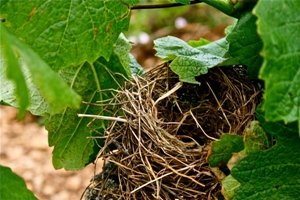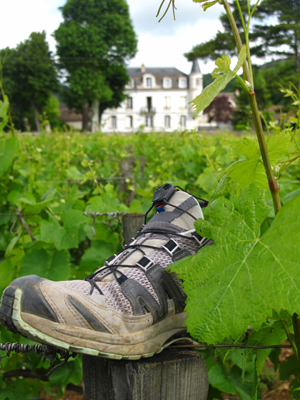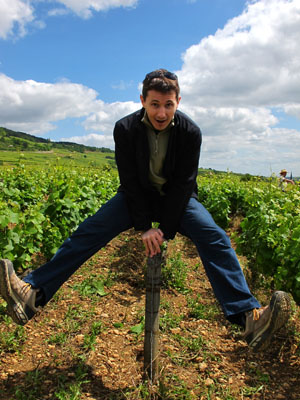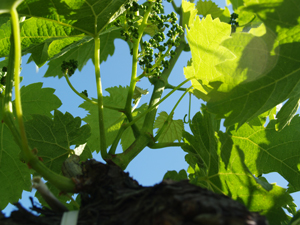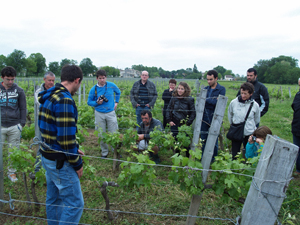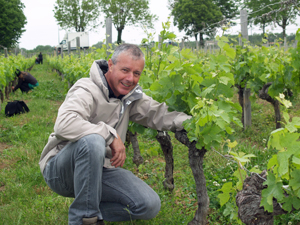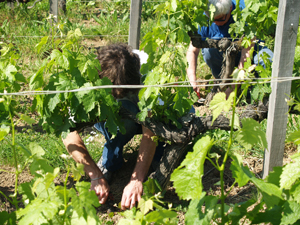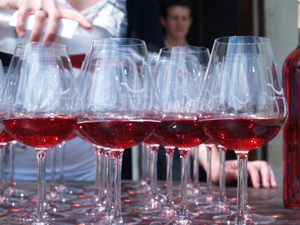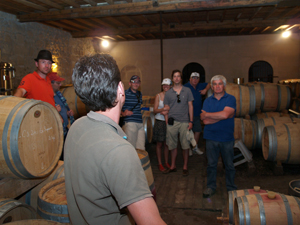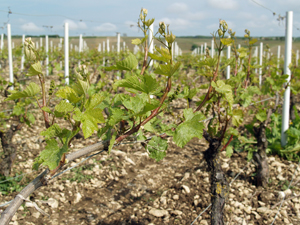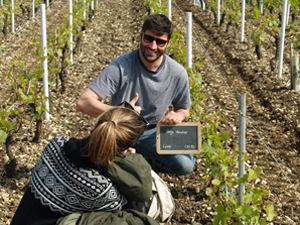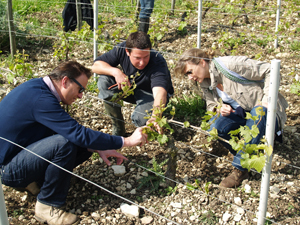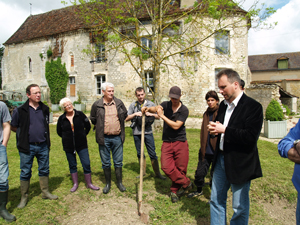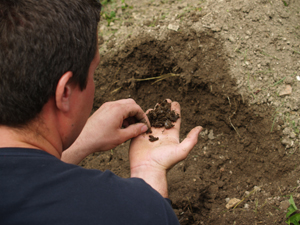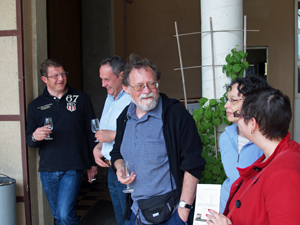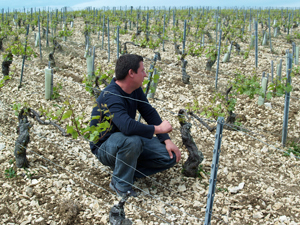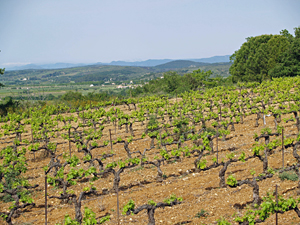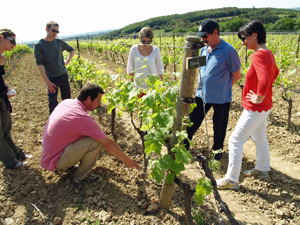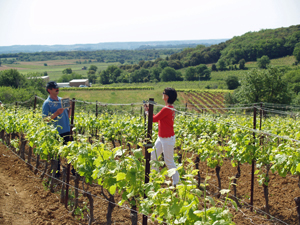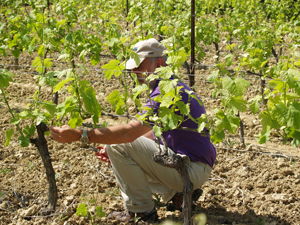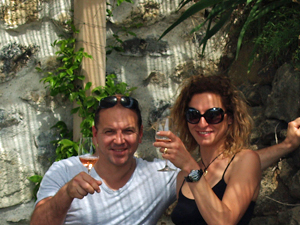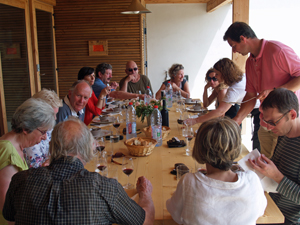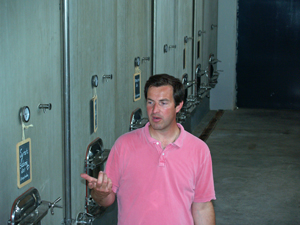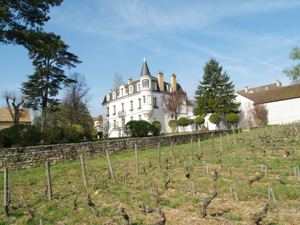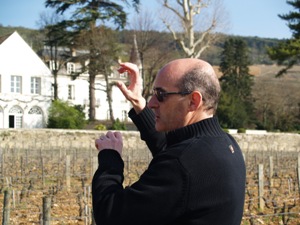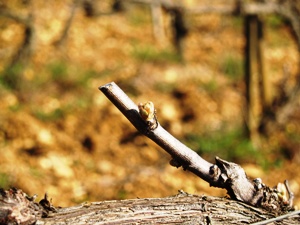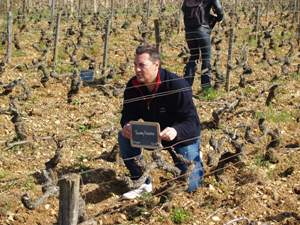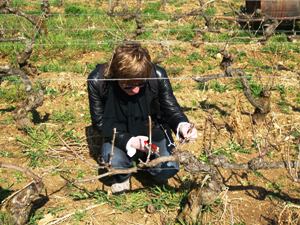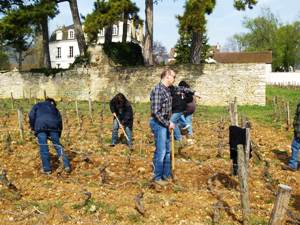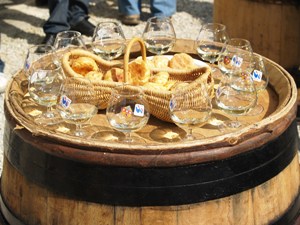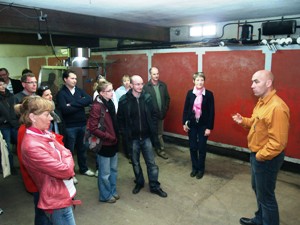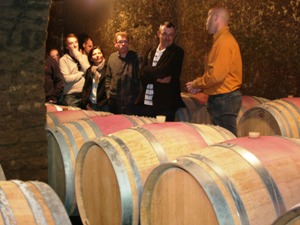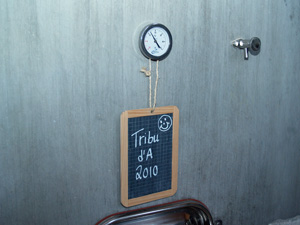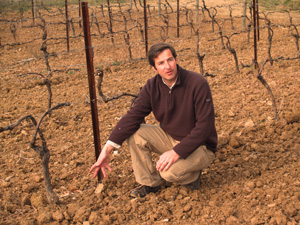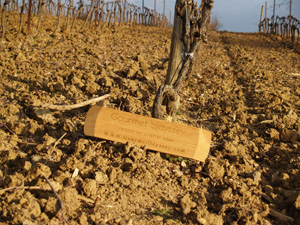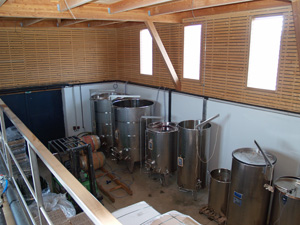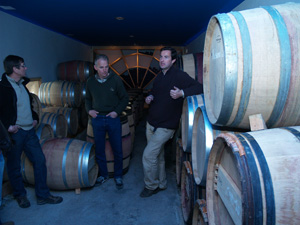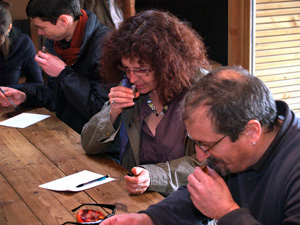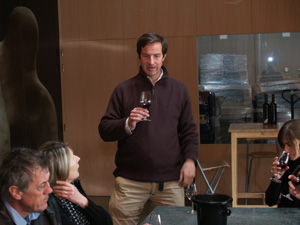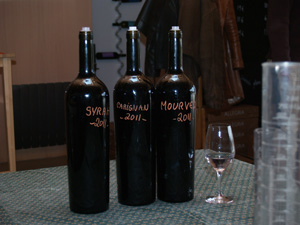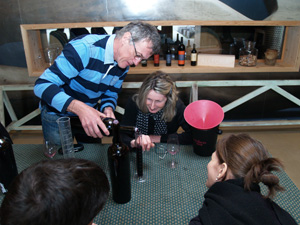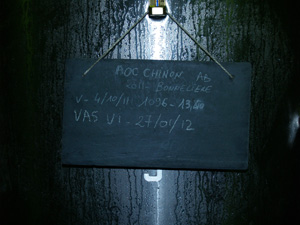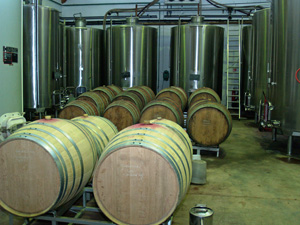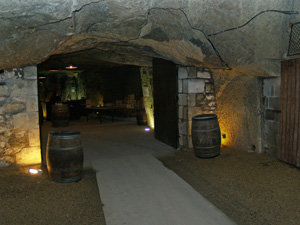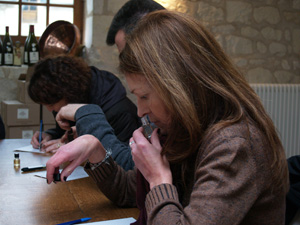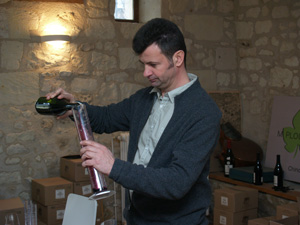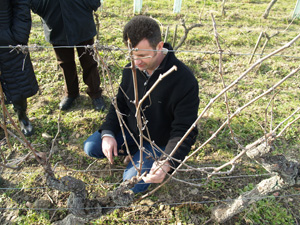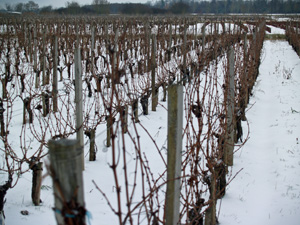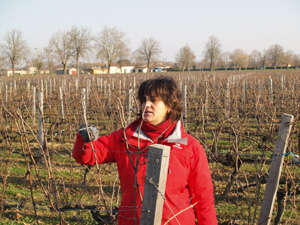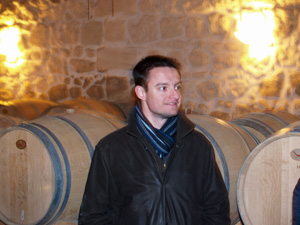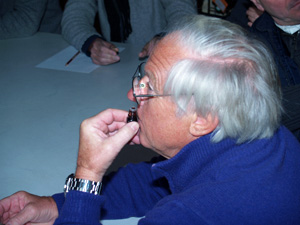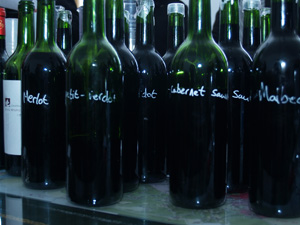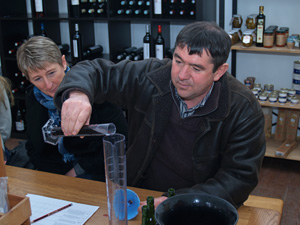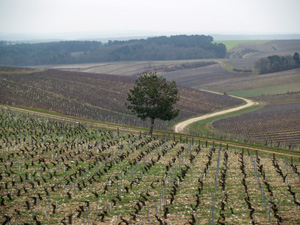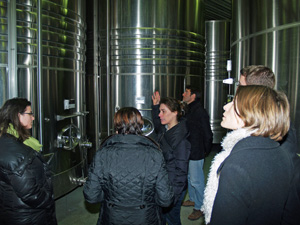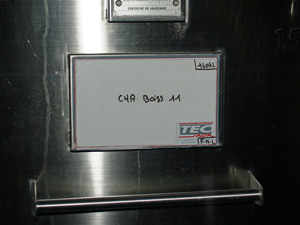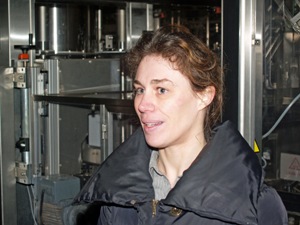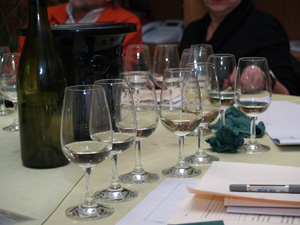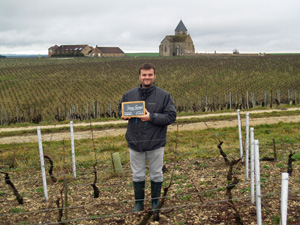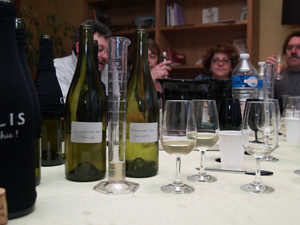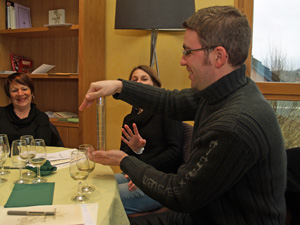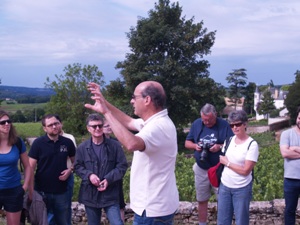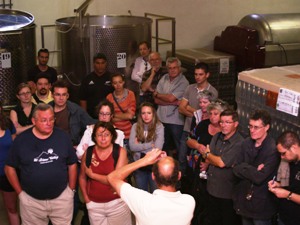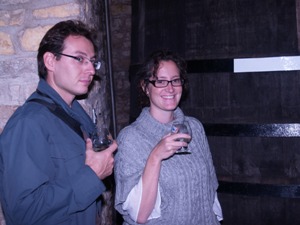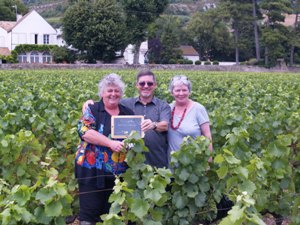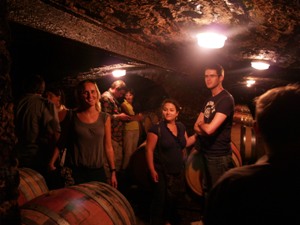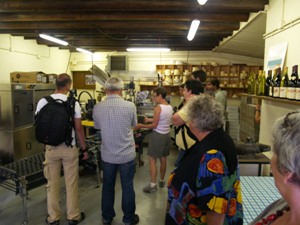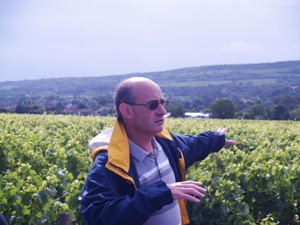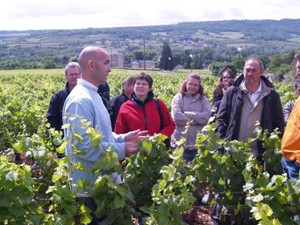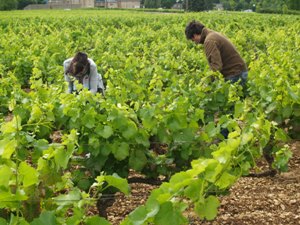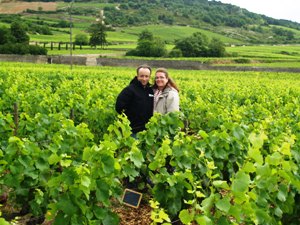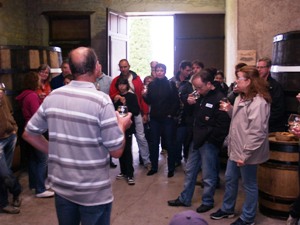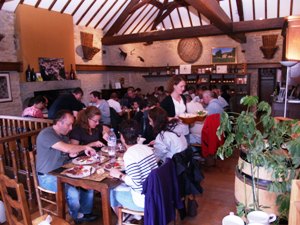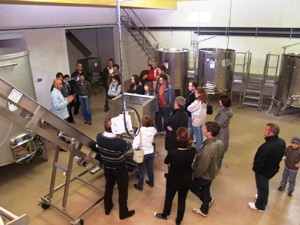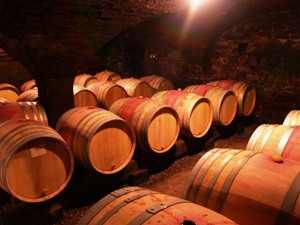The sun doesn't always shine in the vineyard as we well saw last
Saturday! But a few drops of rain weren't going to get in the way
of our Wine Discovery Experience Day at Château de la
Bonnelière.
To work around the weather as best as possible we changed the
order of things slightly, so instead of starting in the vineyard
like we normally do, we began the day with a visit to the cellar.
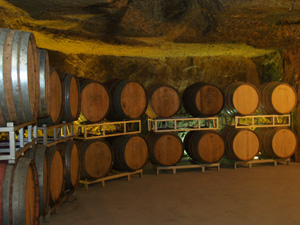
The impressive cellar at Château de la Bonnelière lies directly beneath the Chinon Fortress. Marc Plouzeau, the winemaker and owner, showed us the scars left in the rock from the picks used by the miners when the cave was dug by hand to extract the stone used to build the castle.
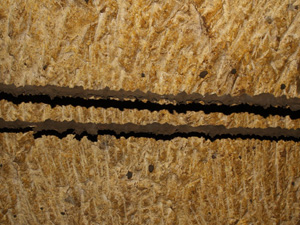
Marc explained to us how the wine is aged in the cellar, and also how he makes his sparkling wine.
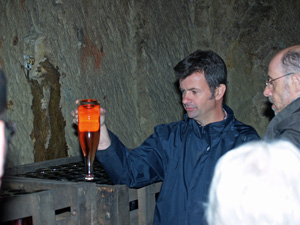
We had our first taste of some of the wines from the winery in
the cellar, enjoying a couple of Touraine and Chenin Blanc white
wines as well as a Chinon rosé.
Back at the winery, we visited the shed where the tools and
machinery used in the vineyard are stocked. Here, Marc told us
what each piece of machinery is used for and why.
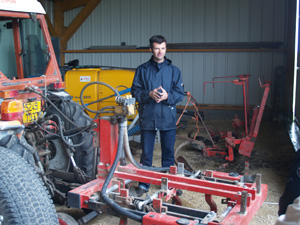
In the chai, we saw where the grapes are received during the harvest and Marc enlightened us as to how the juice from the grapes is transformed into wine. We had the opportunity to taste the 2011 vintage of the Château de la Bonnelière directly from the vat. This Chinon red wine, still in the process of ageing, is the wine that the Gourmet Odyssey clients from last year will receive in a few months time.
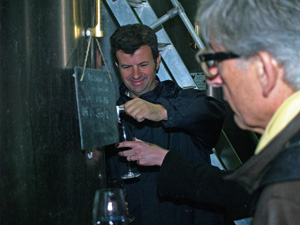
We continued the wine tasting back at the château with the range of different Chinon red wines that the winery produces, and we sat down to eat in the old barn.
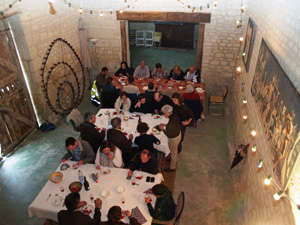
The rain eventually let up a bit in the afternoon, allowing us to get out amongst the vines and finally meet our adopted vines!
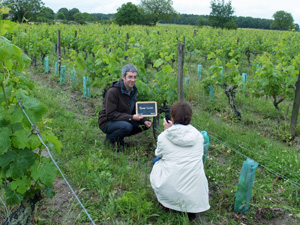
Marc explained the work that has already been down in the vineyard and talked us through what remains to do between now and the harvest. The vines are growing quickly at the moment and are in flower. To help the vines support all of the growth, Marc showed us how to raise the training wires and place the branches between them. It was then time for us to work a few rows on our own!
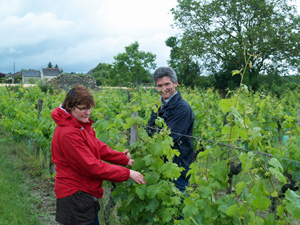
Marc also explained how to go about debudding in the adjacent
plot of Sauvignon Blanc vines.
The day finished in front of the dynamizer that is used to
prepare the biodynamic treatments at the winery. Marc talked
us through the biodynamic philosophy and how it differs from
organic cultivation.
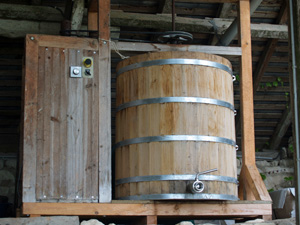
So, despite the weather, we managed to cover many aspects of winemaking during the day. Fortunately we were accompanied by a passionate winemaker, and hardy clients well equipped with wellies and cagoules!



